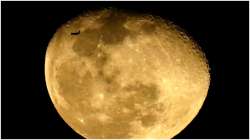NASA hiring more astronauts to explore Moon, Mars
As NASA prepares to land the first woman and the next man on the South Pole of the Moon by 2024 under its Artemis programme and then send humans to Mars, the US space agency wants to hire more astronauts.

As NASA prepares to land the first woman and the next man on the South Pole of the Moon by 2024 under its Artemis programme and then send humans to Mars, the US space agency wants to hire more astronauts.
NASA will accept applications March 2-31 for the next class of Artemis Generation astronauts, the agency said on Tuesday.
Since the 1960s, NASA has selected 350 people to train as astronaut candidates for its increasingly challenging missions to explore space.
With 48 astronauts in the active astronaut corps, more will be needed to crew spacecraft bound for multiple destinations and propel exploration forward as part of Artemis missions and beyond.
"We're celebrating our 20th year of continuous presence aboard the International Space Station in low-Earth orbit this year, and we're on the verge of sending the first woman and next man to the Moon by 2024," said NASA Administrator Jim Bridenstine.
"For the handful of highly talented women and men we will hire to join our diverse astronaut corps, it's an incredible time in human spaceflight to be an astronaut. We're asking all eligible Americans if they have what it to takes to apply beginning March 2," Bridenstine said.
The basic requirements to apply include United States citizenship and a master's degree in a STEM field, including engineering, biological science, physical science, computer science, or mathematics, from an accredited institution.
The requirement for the master's degree can also be met by two years of work toward a Ph.D. programme in a related science, technology, engineering or math field; a completed doctor of medicine or doctor of osteopathic medicine degree; completion (or current enrolment that will result in completion by June 2021) of a nationally recognised test pilot school programme.
Candidates must also have at least two years of related, progressively responsible professional experience, or at least 1,000 hours of pilot-in-command time in jet aircraft, NASA said.
Also Read | Mars may periodically see formation of salt water, says research
Also Read | Scientists discover massive newborn planet close to Earth
